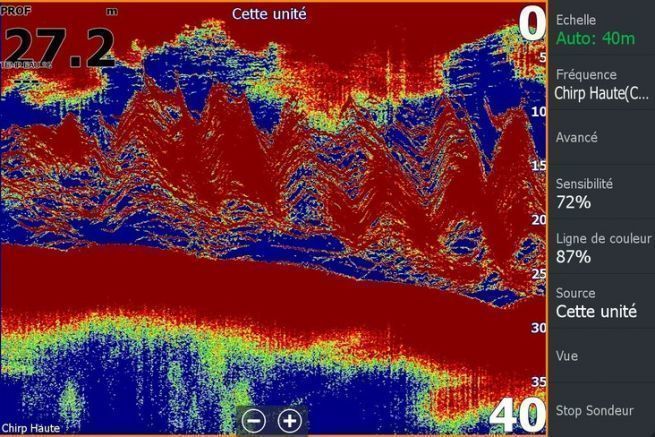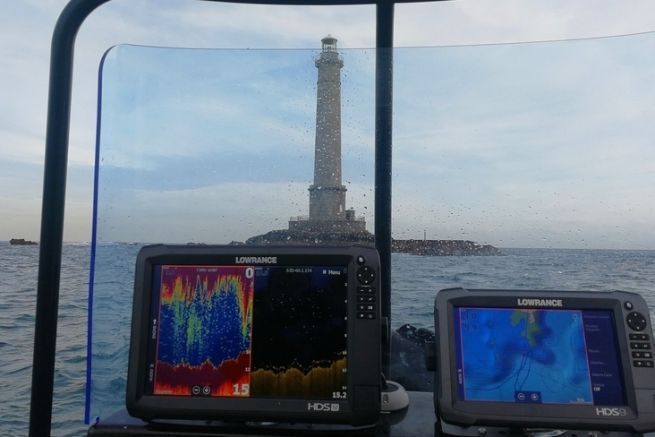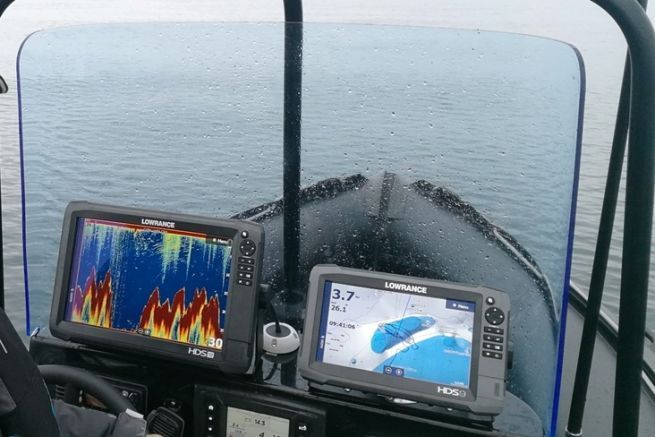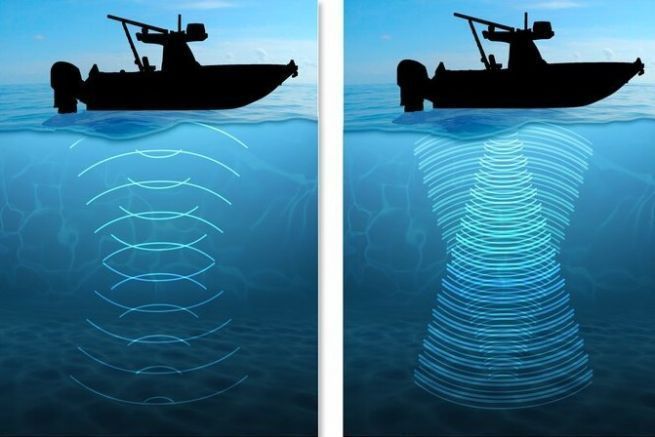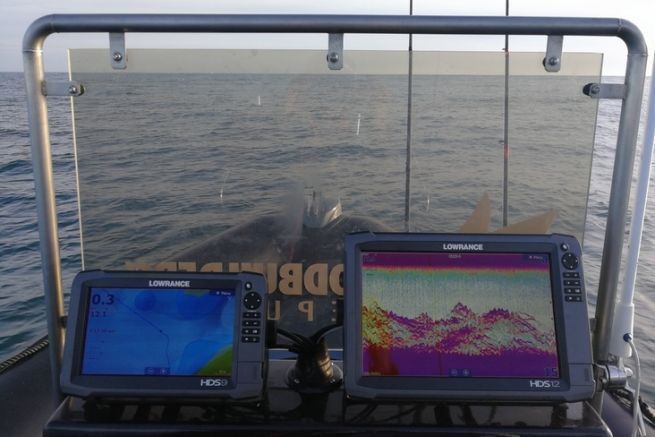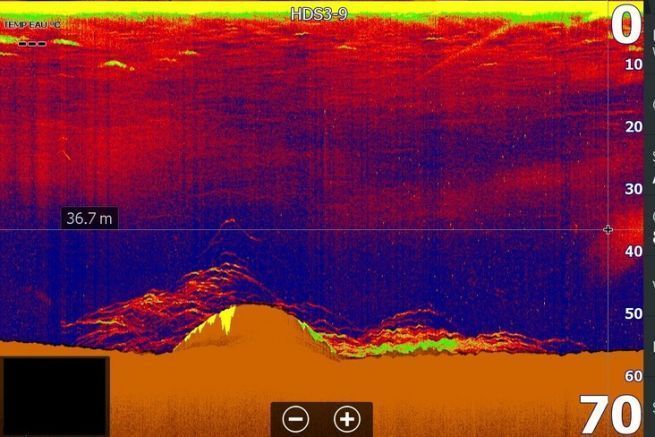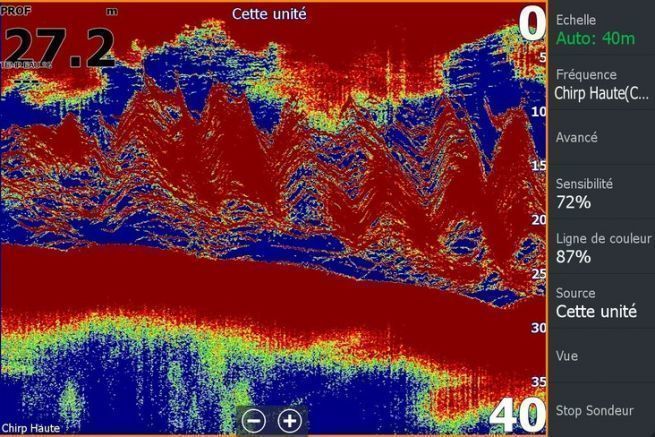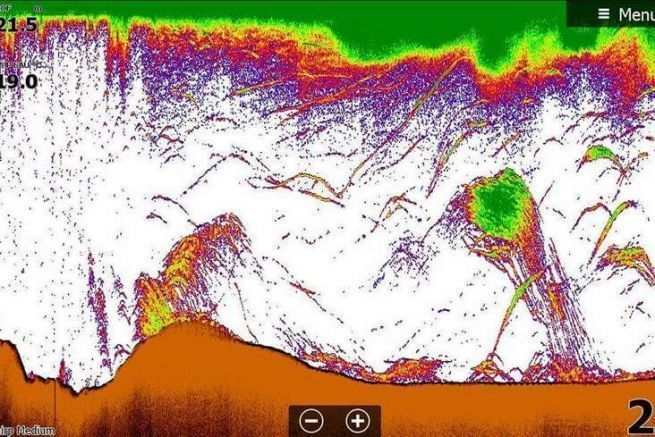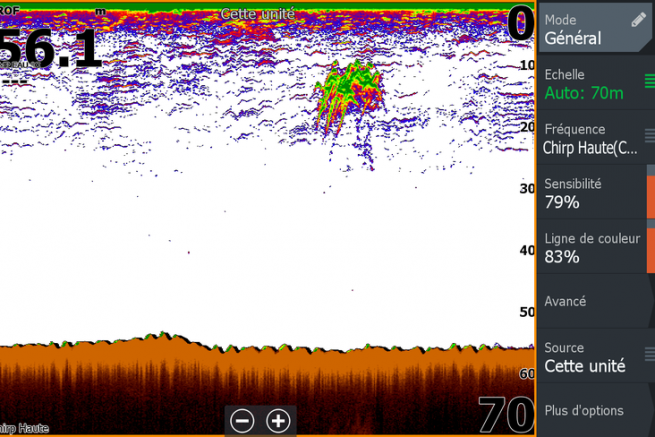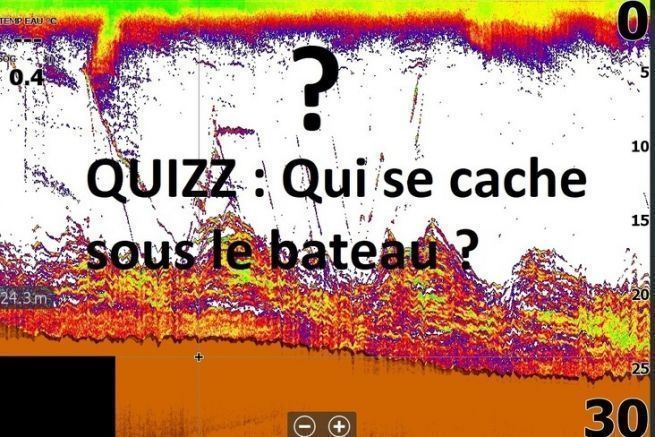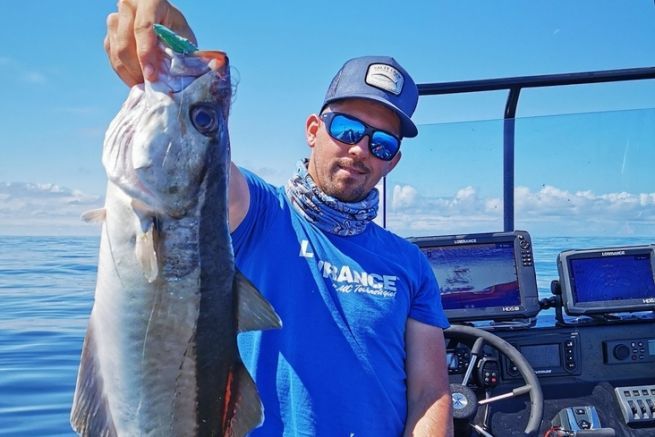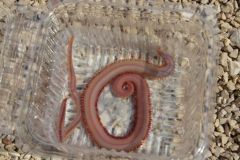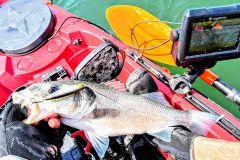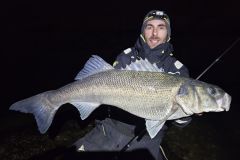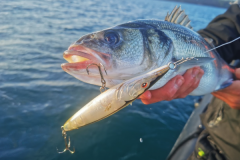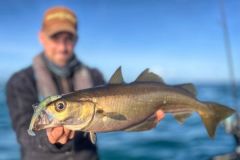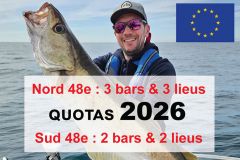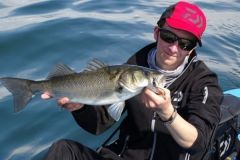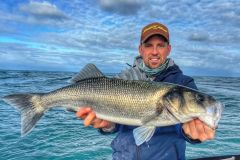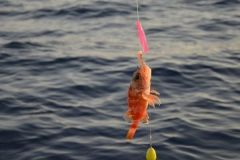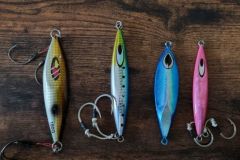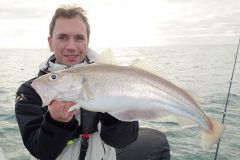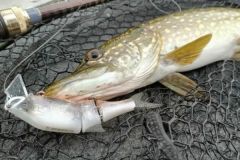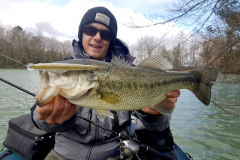Probably the most coveted species by sport fishermen at sea, the sea bass is not the most complicated species to identify with a fishfinder. Generally living in schools ranging from a few individuals to several hundred, even thousands in some situations, this fish is usually located high in the water.
Distinct echoes
Contrary to the detection of yellow leagues that we have studied in the previous article the bar will usually give you echoes that are distinct from each other and have a strong, warm color. In order to have an optimal discrimination and to be able to identify the echoes one by one, a CHIRP probe is recommended but not essential.
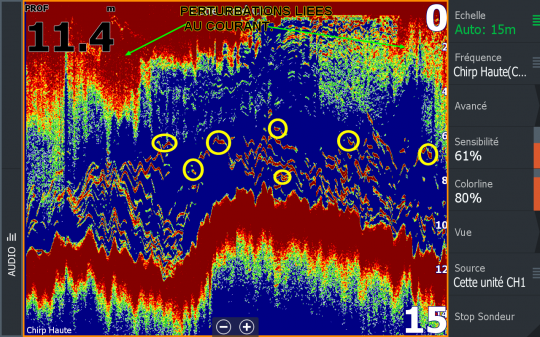
This capture was made in an area of strong current. The screen is quite saturated despite the sensitivity being lowered to 61%. I could have made the reading of this one easier by lowering the sensitivity or by activating the filters, but this would have undoubtedly been at the expense of the visible information.
The arched echoes indicate the presence of active fish under the boat. I have circled some of them in yellow. Each echo represents a fish. The frequency used is the CHIRP high, i.e. my detection cone was about 3.50 m. This kind of echoes is really characteristic of sea bass detections.
Do not be fooled
The following capture, as impressive as it is, shows a huge bass ball under the boat. When we saw this on the depth sounder, we were quick to put our soft lures in the water.
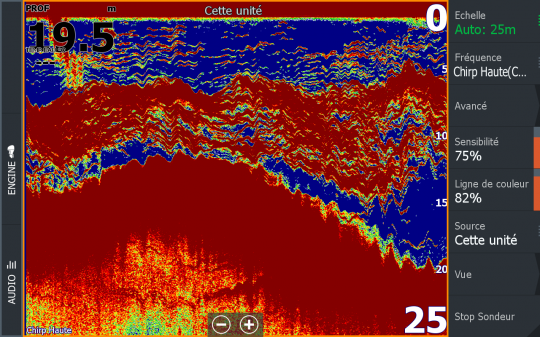
Few species in the Channel and Atlantic area gather in such a compact school. I thought for a while of mackerel but the echoes were too big to correspond to this species. We were on a rocky area, off the coast, close to the Roches Douvres. The detection was located at mid-height in the water column, so we are dealing with pelagic type fish. All these elements allow me to say that they are sea bass. It is possible to find this kind of schools when the current is weak. As soon as this one is going to accelerate, the school will disperse.
After 4/5 casts each, no touch, not a fish. Our soft lures and jigs were shunned by the fish.
If you take a closer look at this capture, you can see 2 distinct areas that I have marked with the green line on the following capture.
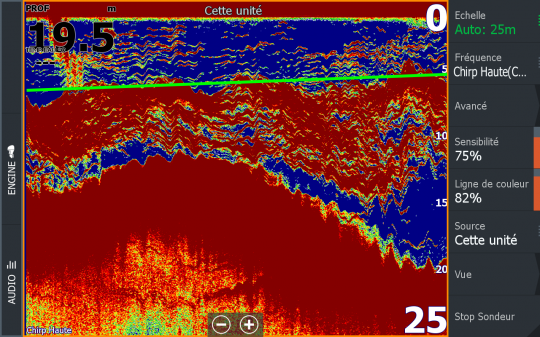
- On the lower part, the quantity is important. On the other hand, the echoes are rather linear. This betrays a passive behavior of fish unlike the first capture seen previously. It is thus not surprising that our lures did not arouse much interest in the fish.
- The upper part of the green line shows a few echoes detached from this inactive mass. By looking at the depth line on the right side of the screen, it's easy to tell that these echoes are between 5 meters and the surface. This indicates active fish near the surface. The use of a surface lure was entirely appropriate.
And that's how we managed to break the deadlock and string together several fish, all on the surface.
This screen shot of a Lowrance HDS 12 sonar reminds us that it's important to identify the area of fish activity or it will make fishing difficult.
The 2D/ FishReveal
To facilitate the interpretation of sonar echoes, I use the FishReveal mode proposed by Lowrance in parallel with 2D.
I presented this great tool in a previous article.
Here is a screenshot of a bar in the same conditions as the first one in this article.
In 2D, very red echoes, very distinct, which indicate a strong activity at mid-height. Add to this the configuration of the area, i.e. a current vein between 2 rocky ascents. No doubt, it is sea bass.
On the right side of the screen is the FishReveal view, which allows you to get rid of current disturbances and reveal the presence of fish near the surface.
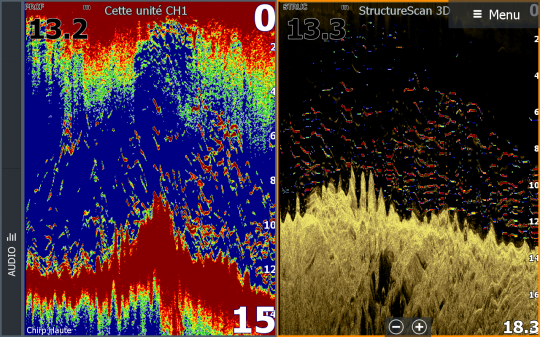
Ãeuros retain
- The bar echoes are generally quite distinct with a high intensity.
- Don't be fooled by a large non-active detection.
- Be sure to identify whether the echoes are linear or arc-shaped.
- Sea bass, pelagic fish are often found at mid-height or towards the surface when hunting.
- Bass are stuck to the bottom in areas with very strong currents or when food is not present. Look for echoes near the bottom.
- Adapt its fishing according to the area of activity.

 /
/ 